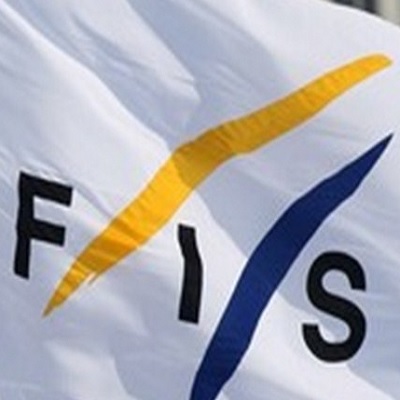Decarbonization Of Austrian Lifts: Concrete Measures Show Way To Climate Friendly Operation

In Saalbach, the Ropeway Association of the Austrian Chamber of Commerce presented a CO2 monitoring system specially developed for companies, which, in addition to looking into the past, is primarily aimed at activating remaining potential in terms of sustainability. “With this system, the mountain railways are enabled to systemically record their energy use and emissions and to develop hotspots from this, to track developments over the years and to exchange information with each other in a targeted, fact-based manner,” says Endrik Lengwenat, management consultant for climate protection and sustainability at the company Sustainable AG. Together with Peter Mitterer (Hinterglemmer Bergbahnen), Kornel Grundner (Leoganger Bergbahnen) and Michael Brüggl (Schmittenhöhebahn), initial results and future development measures were presented.
“For many years, the cable cars in Austria have consistently followed the path of energy saving, green electricity production and the reduction of fossil fuels. We don't buy our way out with certificates, we don't do green washing - we invest in ecologically oriented local energy infrastructure and thus make our regions sustainably greener and healthier," emphasized host Peter Mitterer, Managing Director of Hinterglemmer Bergbahnen GmbH and Chairman of the "Sustainability" working group. in the cable car trade association.
“Now the industry is proactively taking on the next task: presenting the effects of various sustainability measures in companies. This is intended to show companies how well positioned they are and where there may still be potential,” says Mitterer. The trade association has thus made a strategically important and correct decision to promote sustainable energy and CO2 management.
The potential reductions can be quantified through industry-specific measures - efficiency in piste preparation, snow depth measurement, driving speed adjustment. The instrument has been loaded with content since the last winter season, which is why meaningful data is already available in the first ski areas. With the tool aimed at cable car companies, the challenges can be taken into account uniformly and thus comparability can be ensured.
“Based on the CO2 calculations from the last two winter seasons, it is clear that measures that have already been tested and established will lead to a sharp decrease in emissions in a manageable time frame up to 2030,” said Lengwenat.
Electricity, heat and vehicle fleet as central factors for sustainable operation
The measures in the three ski regions of Saalbach-Hinterglemm, Leogang and Schmittenhöhe also impressively show how much the investments in sustainable infrastructure have had to date and will have a positive impact on the operational energy balance in the future. In addition to the production of our own electricity and energy saving, the major topics include the form of heat generation and use as well as the switch from diesel to the biofuel HVO for snow groomers.
Hydropower project as an “energy game changer” for Saalbach-Hinterglemm
In addition to the sun as a renewable energy source, hydropower is also becoming increasingly important. In Hinterglemm, the Wiesermühle hydroelectric power plant, which is being built by the mountain railways, is nearing completion. With a forecast annual energy volume of 1,800,000 kilowatt hours (1.8 GWh) - which corresponds to the average annual energy requirement of over 400 households - the system is a real game changer and will make a significant contribution to the in-house production of renewable energy for the operation of the cable car systems in the future. “In terms of the amount produced alone, the decision in favor of hydropower is a groundbreaking one that will contribute to a comprehensive change in supply,” said Managing Director Peter Mitterer, referring to the test operation of the plant starting in mid-April.
Extensive PV supply and expansion of sustainable heating technology
The Schmittenhöhe in Zell am See has been massively pushing forward the expansion of photovoltaic systems since 2013. Thanks to the goal of one new plant per year anchored in the environmental management system, 14 plants are currently in operation. The largest of these is the one at the valley and mountain stations of the cityXpress, which produces the energy itself for every fourth mountain journey. Furthermore, heat recovery from engine and kitchen waste heat is used to heat employee and guest rooms. All buildings on the mountain are heated electrically, and there are also geothermal heat pumps with deep boreholes in the office building and at the valley station of the zellamseeXpress. “Our office building also meets the requirements of a low-energy building; geothermal energy is used here for heating and cooling. “The employee residence currently under construction should also be equipped with a geothermal heat pump and be awarded the GOLD climate-active building standard,” says Michael Brüggl, environmental officer at Schmittenhöhebahn AG.
HVO fuel is displacing diesel from ski areas
Before the start of the 2023/24 winter season, Leogang focused on the sustainable conversion of the fleet as a central lever for CO2 reduction. With the complete switch to HVO100 renewable fuel, savings of around 510 tons of CO2 have already been achieved compared to the previous year. Additional advantage: Despite the use of HVO, which is made from 100 percent renewable raw materials, no conversion of the vehicles and snow groomers is necessary; the tanks only had to be emptied and cleaned in the company filling station. In addition to vegetable oils, waste as well as oils and fats from residual materials are used to produce HVO fuel, such as used cooking oil or frying fat from kitchens. “After the successful premiere and the high level of efficiency in the first season, 270,000 liters of HVO have now been ordered again for the coming season and the operation of our nine snow groomers and 14 other vehicles,” says Managing Director Kornel Grundner, Leoganger Bergbahnen GmbH. This also refers to the heating of a workshop and the Stöcklalm restaurant via heat recovery from the drive motors on the Asitzbahn and the procurement of district heating via the biomass heating plant operated jointly with neighboring hotels as further measures.
Because everything around also counts: Alpine Ski World Championships 2025 as a green event
With the new monitoring tool, the Austrian Cable Car Association focuses exclusively on the direct and immediate emissions in the member companies. “But we also know that we are not alone. Only around 10 to 20 percent of the total emissions from skiing come from the core areas of the mountain railways, i.e. the cable cars and the slopes,” says Peter Mitterer. This makes it all the more important that all winter sports partners pull together and strengthen their joint efforts. The organizers of next year's Alpine Ski World Championships in Saalbach are also relying on the environmental and resource-saving effects of a 'green event' with their format,” says Mitterer.













